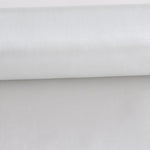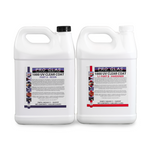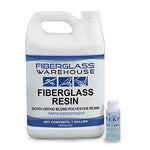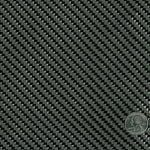You have no items in your shopping cart.
Do you have a project in mind but have no idea where to start? Let us help you. One of the first things you will want to do is decide what kind of fiberglass you want to use. Do you need to build up thickness fast? Are you concerned about strength? Do you have tight corners you are working with? Let us break things down a bit to help you decide if fiberglass cloth is right for your project or if you are needing chopped strand mat. Keep in mind that you can actually use both together to achieve your desired outcome. Below is an overview.
Fiberglass Cloth

(Plain weave fiberglass cloth)
Fiberglass Cloth is a woven fabric. Plain, 4 harness satin and 8 harness satin are the weave styles we carry. The 4, 6 and 10 ounce plain weave fabrics are the most commonly used. In this simple plain weave pattern, warp and fill yarns are interlaced over and under each other in alternating fashion. The plain weave is the easiest to handle since it does not unravel as much as the other weaves when cut.

In the four-harness satin weave pattern there is a three by one interfacing where a filling yarn floats over three warp yarns and under one.

The eight harness satin is similar to the four harness satin except that one filling yarn floats over seven warp yarns and under one. The satin weaves are slightly stronger and more pliable than the plain weave and are easier to conform to curved surfaces. They are more difficult to handle than the plain weave, though. Use fiberglass cloth when you are looking to create a strong, light weight product.

Chopped Strand Mat
Chopped Strand Mat (also known as fiberglass mat) has short strands of fibers held together with a resin binder. The fibers are randomly oriented. Mat is only compatible with polyester and vinyl ester resin. When resin is added to the mat, the binder dissolves and the fibers can be moved around. It is easier to conform mat to tight curves and corners than it is with weaved fabric. The reason chopped strand mat is not compatible with epoxy resin is because the binder holding the fibers together needs styrene to properly dissolve. Polyester and vinyl ester resins have styrene in them. (There are some places that sell chopped strand mat that is compatible with epoxy but it is hard to come by and much more expensive). Chopped strand mat is the least expensive fiberglass and is often used in mold construction or projects where thickness is needed. Mat is often used as the first layer (before the gelcoat) in a laminate to prevent print through. Print through is when the fabric weave texture shows through the resin. Chopped Strand mat does not have much strength. If you need strength you should choose a woven cloth or you could mix the two. Mat can be used between layers of woven fabric to help build thickness quickly and aid in all layers bonding well together.
If you have any questions feel free to comment. We will do our best to reply with an answer. Or, you can visit our website Fiberglass Warehouse for more information.
For more detailed information on each fiberglass cloth we carry, you can CLICK HERE.
comments (50)
-

-
 Jeff
JeffI have a fiberglass bay boat that has some soft spots in the floor that I am looking to strengthen. What would be my best option, mat, cloth or a combination of both?
-
 Bob Schmidt
Bob SchmidtI want to cover an old car floor that has some pitting and minor holes. The floor has been protected with PPG DP 90. I think using fiberglass cloth would be my best option, as it should be stronger and thinner than mat. Do you know of any issues I may encounter? Thanks.
BobREPLY from fgwarehouse: Fiberglass Cloth would be the best option. A couple layers of the 10 oz cloth with epoxy resin will last a long time. The DP 90 is an epoxy primer, so epoxy resin should be used. Depending on how long ago you applied the primer, you may need to rough it up a little.
REPLY from Bob Schmidt: Thank you for the reply. I applied the DP 90 over 20 years ago, but will lightly sand/roughen up before applying the cloth and resin.
Would the 1200 resin and hardener, along with the 10 oz. cloth, be a good choice for my use?REPLY from fgwarehouse: That would be perfect. I would used to 80 or 120 grit to roughen it up. Be sure to clean it with acetone afterwards.
REPLY from Bob Schmidt: I just have to choose a hardener, then I’ll place an order.
-
 Nick Cantrell
Nick CantrellHi, I am planning on making aftermarket bolt-on fender flares for a car. The shapes do have contour and seams but no complex geometry. The fenders need to be durable but also light. What type of layup would you suggest?
REPLY from fgwarehouse: Chopped strand mat will always be the easiest and cheapest to use. I would still recommend using chopped strand mat against the mold, then a layer or two of 6 oz cloth, depending on how strong it needs to be. If you want superior strength, use vinyl ester resin. It’s characteristics are similar to epoxies.
-
 mario r miralda
mario r miraldaI want to repair my swimming pool in ground what kind of fiberglass mat I have to use how much fiberglass mat I need in my swimming pool in ground 35″5″ length ×15″8″width 37″shallow 6″4″deep thanks.
REPLY from fgwarehouse: Hello Mario, I calculated roughly 122 square yards that you will need. First off, what is the problem? Are you just redoing the surface? Is the surface cracked? Is the gel coat peeling? You will also need to choose a type of resin. You need a minimum of ISO resin and our guard gel coat.
REPLY from Mario r Miralda: hi yes I want to redoing the surface and floor it has holes in the walls floor is cracks thank you for your help











I need to repair a crack on am acrylic pool slide – what would be my best fiberglass and resin combination?